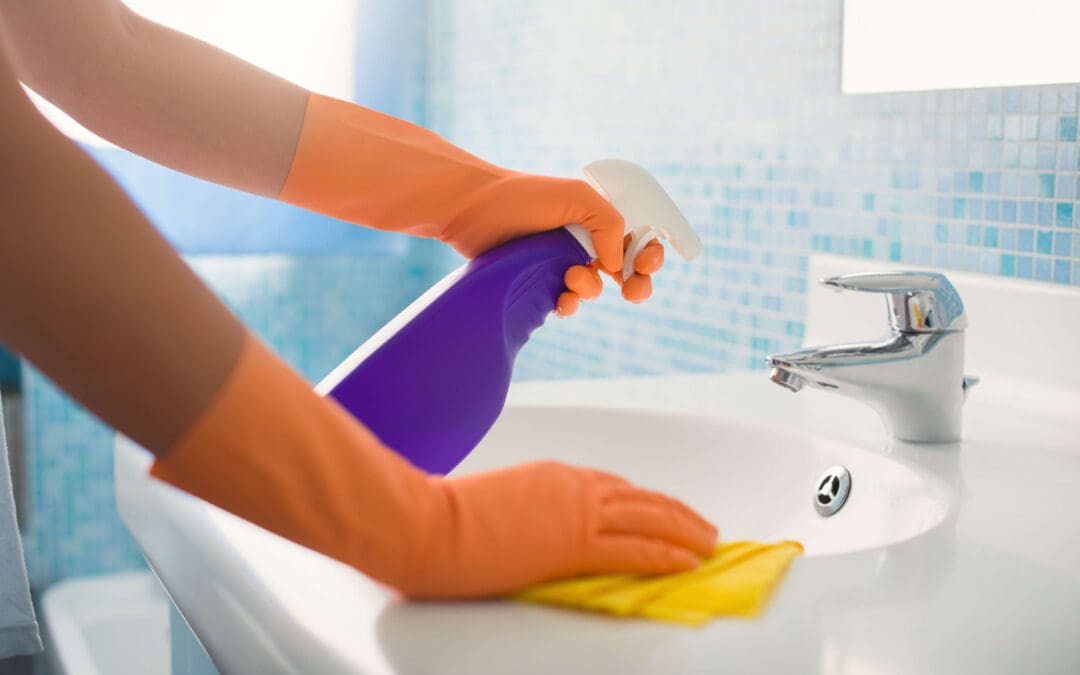You work hard to maintain a clean and safe environment for your family, but the truth is, many everyday products introduce unwanted chemicals in your home. Substances used for cleaning, decorating, and pest control could impact indoor air quality and long-term health. The good news is that recognizing these common sources and making informed, confident choices is the key to creating a healthy living space. Taking control of the chemicals in your home is a powerful act of proactive home management.
The Silent Pollutants: Understanding Chemicals in Your Home
The air inside your house is often more polluted than the air outside, largely due to products that release Volatile Organic Compounds (VOCs). VOCs are gases emitted from certain solids or liquids. Common sources include paints, varnishes, cleaning supplies, air fresheners, flooring, and even furniture. While some emissions drop off after initial use (like the “new paint smell”), many materials continue to release small amounts of chemicals for months or even years. Symptoms from exposure range from eye irritation and headaches to long-term respiratory issues. Becoming aware of the products you bring into your space is the crucial first step in minimizing this chemical load and improving your overall indoor environment.
The Cleaning Cabinet: High Concentrations of Chemicals in Your Home
One of the most obvious places to start reducing chemical exposure is in your cleaning cabinet. Many conventional cleaners contain ingredients like ammonia, bleach, and phthalates (often found in synthetic fragrances) that are not only harsh but contribute significantly to the total load of chemicals in your home.
You don’t have to sacrifice cleanliness for safety. Look for cleaning products that are certified “green” or non-toxic and clearly list all their ingredients. Replace abrasive, heavily scented cleaners with simpler, effective solutions. Vinegar, baking soda, and castile soap are natural powerhouses that will tackle household mess without introducing harsh vapors. For disinfecting, diluted hydrogen peroxide is an excellent alternative to bleach-based products. Even when using gentler products, always ensure proper ventilation. Running exhaust fans in the kitchen and bathroom, or opening a window while cleaning, helps pull chemical vapors and moisture out of the air, reducing your direct exposure while you work.
Furnishings and Finishes: Hidden Chemicals in Your Home
The materials used in home renovations and furnishings are subtle but persistent sources of chemicals in your home. This includes new flooring, carpeting, and even upholstered furniture. When planning a renovation, prioritize low-VOC or zero-VOC paints, stains, and adhesives. These products have been formulated to significantly reduce the emission of harmful gases during and after the application process.
The “new product” smell often associated with new furniture (especially composite wood products) or carpeting is usually the smell of VOCs like formaldehyde. If possible, “off-gas” new items by leaving them in a garage or well-ventilated space for a few days before bringing them inside. For carpeting and flooring, look for materials certified by third-party organizations that test for low chemical emissions. This proactive approach minimizes the amount of new chemicals in your home being added to the environment.
Safe Storage and Disposal of Chemicals
Managing the chemicals in your home is just as important as reducing them. Improper storage and disposal may pose risks of fire, accidental poisoning, or environmental damage. Never store incompatible chemicals near each other (like bleach and ammonia, which create a toxic gas when mixed). Keep all cleaners, pesticides, and other hazardous materials in their original, clearly labeled containers, stored in a secure location out of reach of children and pets. Never pour hazardous chemicals down the sink or storm drain. This contaminates the water supply and may damage your plumbing. When you need to dispose of old paint, solvents, pesticides, or batteries, check your local municipal website for hazardous waste collection events or designated drop-off sites.
Frequently Asked Questions (FAQs)
What exactly are VOCs and why should I care about them?
VOCs (Volatile Organic Compounds) are carbon-containing chemicals that easily turn into gases at room temperature. They are a primary cause of poor indoor air quality and are linked to various short-term and long-term health issues.
Are air fresheners a good way to improve the air quality from chemicals in my home?
No. Most air fresheners use synthetic fragrances that contain phthalates and other chemicals that contribute to indoor air pollution. Natural ventilation (opening windows) or non-toxic essential oil diffusers are much healthier alternatives.
Does ventilation completely eliminate the risk of chemicals in my home?
Ventilation is the most critical step for reducing the concentration of chemicals in your home. While it doesn’t eliminate the source, it moves polluted air outside and brings fresh air in, lowering exposure levels.
Where can I find information on non-toxic products?
Look for third-party certifications such as the EPA’s Safer Choice label or environmental certifications for low-VOC products.
House2Home Inspection Services provides inspection services to customers in Hillsborough, Pasco, Pinellas, Manatee, Hernando, and Polk counties. Contact us to request an appointment.

